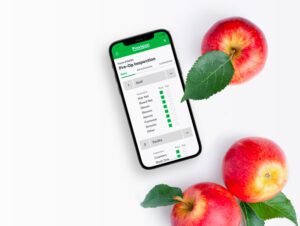If your food business or warehouse already follows good manufacturing and good distribution practices, now is the time to upgrade to an SQF certification which will enable you to export and to do business with large customers and retail chains. Safe Quality Food (SQF) is an accredited, internally-recognized food safety certification which is benchmarked to requirements published by the Global Food Safety Initiative (GFSI). The SQF certification validates adherence to good food safety practices all along the supply chain, starting from primary food and animal production to the manufacturing, storage and distribution of food and dietary supplements. The certification is site and product specific and requires a Codex HACCP plan at its core. A Food Safety Management System (FSMS) based on SQF requirements is a pre-requisite for certification and follows the tenets of the Plan-Do-Check-Act cycle towards continuous improvement. The site’s documented system must be supported by senior management and should actively establish and measure the level of food safety culture at the site. The FSMS complies with customer specifications and regulations for the country of manufacture and country of export (where applicable). Some of the mandatory programs within SQF include System Verification, Internal Audits, Corrective Actions, Food Defense and Food Fraud.
Let’s review each step of the SQF certification process and outline the deliverables at each implementation milestone.
Step 1 – Establish the Scope of your SQF Implementation Project
First, you will need to browse the SQFI website and download a copy of the SQF Code for your industry sector. Review Appendix 1 – SQF Food Section Categories On page 77 of the Food Manufacturing Code to establish the scope of your SQF implementation project. You may need to comply with the requirements of multiple codes if you manufacture and store several categories of products (e.g. Food Manufacturing and Dietary Supplement Manufacturing codes). The table lists products under each food safety category, as well as the Module # for the GAP/GMP or GDP implementation. For instance, Confectionary Products (FSC#17) requires implementation of System Elements and Module 11 Food Manufacturing. For Storage and Distribution (FSC#26), System Elements and Module 12 requirements must be implemented. Modules 11 and 12 capture the site programs, also referred to as Pre-requisite programs (PRPs) to HACCP. These include waste management, sanitation and pest control programs, your employee hygiene and training program, water/gas/ice/steam quality and building and equipment programs.
Step 2 – Contact a Certification Body
Once the FSCs are known, contact Certification Bodies (CB) in your area to confirm the scope of implementation and obtain quotes. CBs are authorized to provide SQF audit services and are audited themselves by accreditation bodies. They recruit SQF auditors who must certify independently from the CBs to avoid any conflicts of interest. Once you decide on a CB, register the site in the SQFI site database by selecting NEW SUPPLIER LOGIN. Schedule your audit months in advance and discuss the format of the audit with the CB. SQF Certified auditors are very busy flying coast to coast and, in some cases, crossing borders. You will want to plan well in advance to secure an audit time, especially if your FSC is unique (e.g. honey processing). You also want to ask the CB if some of the audit activities can be done remotely which will be cost effective. The SQFI remote audit policy can be found at this link. In addition, you want to investigate the possibility to schedule a pre-audit with the CB. This assessment will serve as a dress rehearsal for the scored audit and may be performed by the same auditor assigned to your site. As mentioned above, the assigned auditor must be competent in all the FSC#s identified in your SQF scope of certification. All certified SQF auditors can provide documentation to that effect.
Plan to have 2-3 months of SQF records before scheduling an initial SQF audit. Certified sites receive their SQF certificates 45 days after the last day of their audit, assuming that they achieve a pass (score of 70% minimum) and that all corrective actions have been submitted and accepted by the auditor. Furthermore, a “C-Complies” score require sites to undergo a surveillance audit after 6 months which increases the site’s certification budget. It’s therefore critical to do things right the first time and choose the best approach for implementation. While it may take 3 months for an HACCP certified facility to schedule its first audit, it will take significantly more time (6 months to a year) if the SQF manual must be written and food safety training delivered to employees and practitioners. Hiring SQF practitioners with prior audit experience will save time and money.
If you decide to employ a consultant, verify their competence. SQF certified consultants and trainers must maintain their credentials through Exemplar Global which requires annual fees. During an audit, consultants cannot speak for practitioners and senior site management. Therefore, it is important that the SQF team be fully trained on the SQF code and be knowledgeable of the SQF procedures developed for them by consultants. Procedures and policies that are well organized, easy to read and easy to understand make a huge difference and save time.
Step 3 – Perform a Gap Assessment of your existing food safety program
The next milestone is to perform a gap assessment of your FSMS by downloading a copy of the SQFI Audit Checklist for your FSC#s. You may also review the SQF guidance documents and tip sheets provided to establish whether your food safety system is compliant with the SQF code. Another resource is to check our extensive blog if you have further questions regarding SQF, FSMA, Canadian SFCR or HACCP compliance. This step can be completed with the help of a consultant or SQF practitioner.
Step 4 – Develop and Implement your SQF Manual
This step is usually the most time-consuming task. The site must develop or adapt its manual of food safety policies and procedures, train its employees and document SQF activities (monitoring, verification and corrective action).
We suggest that you designate an SQF team led by 2 SQF practitioners with HACCP credentials. The practitioners are employed by the site and report to a member of senior management. You can download a copy of our SQF Implementation roadmap to help with establishing your project timelines and team. From there, you may develop the necessary food safety documents yourself with or without the help of an SQF consultant. The most efficient way to get certified is to utilize and edit SQF templates. On our website, you will be able to find SQF templates in English and Spanish. The advantage of using prepared documents is that they address the requirements of the SQF code in a streamlined format while including some good food safety practices and regulatory information. The typical Standard Operating Procedure (SOP) addresses the management components of the SQF requirements: scope, document issue/revision date, responsibility, monitoring, verification, recordkeeping and document revision history.
SQF templates don’t include Food Safety, Food Fraud and Food Defense Plans. Since these documents are specific to the site, they must be tailored to the business. Depending on the food safety regulations your business follows, you may decide to invest in training (FDQI/Food Defense, Food Fraud, HACCP/PCQI Preventive Controls for Human Food). This will ensure that the site has an HACCP-certified Lead and back-up practitioner (a requirement of SQF 9). In addition, when working under FSMA, PCQIs and FSQIs will be available to oversee the Preventive Control for Human Food and Food Defense plans. We also recommend SQF Implementation and advanced practitioner courses as they cement the knowledge base and ensure that your team is fluent in SQF requirements. Advanced SQF activities include performing risk assessments, taking part in internal audits and performing food safety plan validations or reanalysis.
Once all the SOPs in your SQF manual are trained upon and implemented, it is time to document activities accordingly establish the frequency of monitoring identified in your SQF manual. Sites should assess food safety risks and establish frequency of inspections, tests or audits. Records should be verified as complete. This means that records should be dated, signed by authorized employees, with the correct number of entries according to the set frequency of tasks. Completeness of records also means that corrective actions and verifications are documented, product and process parameters are legible, units of measure are correct. Remember that incomplete records could lead to a minor (minus 1 point), major (minus 5 points) or even critical (failure) non-conformance (NC) should high-risk food be released without a proper documented kill step for safety.
Document/record control and training requirements apply to the entire SQF system and are usually a source of non-compliance during audits. Other elements that are often incomplete or partially implemented include an HACCP/food safety plan and sanitation and pest control programs. In addition, building and equipment materials and site design have been found to be linked to minor and major NCs. More information on our blog.
Step 5 – The Audit Process
On the day of the audit, the auditor will conduct an opening meeting and will confirm the scope of the audit with the team (at a minimum, with the senior site manager and SQF practitioner(s)). A document and record review will be conducted to ensure that all mandatory elements of SQF (see System elements) are implemented. The auditor will schedule plant inspections and interviews to gauge the level of food safety awareness at the site. The goal of the SQF audit is to provide proof that the SQF code and corresponding manual of procedures and policies is well understood and implemented by all employees on the floor and that corrective actions are initiated when product specifications or process parameters are deviating from food safety, regulatory or customer targets.
A typical SQF audit lasts 2 days and requires submitting corrective action reports for each NC documented by the auditor. Sites have 30 days to respond to the auditor’s report (Minor and Major NCs) with the identified root cause of an NC and corrective action plan. Once CAR responses are accepted, the audit is officially completed and a certificate may be issued to the site. Re-certification takes place a year later, provided a good or excellent score was achieved (86% and over). Surveillance audits are scheduled every 6 months for scores between 70% and 85%. The re-certification audit will generally be more difficult than the initial audit: the team will need to prove to the auditor that it is able to manage change and communicate process and specification updates to employees and stakeholders. At the time of the recertification audit, the site will have over a year of SQF records to review and file. This process will culminate with the unannounced audit every 3 years. The year of this audit is decided in conjunction with the CB. It falls within a 60-day window at the time of recertification (anniversary date of the initial audit +/-30 days).
Once the site is certified, the certificate status is shown on the SQF Certified Site Directory.
Step 6- Maintaining your certification and Improving the FSMS
After the first 3-year audit cycle, the team will become familiar with the SQF code requirements and the management of the FSMS. At this point, the business is on a journey toward continuous improvement. Tips on improving your SQF system can be found in our blog.
At this point, SMART objectives will be established to maintain food safety programs. Equipment upgrades may be implemented to automate processes. The team may decide to use technology to enable faster food tracing and recall capabilities. They may also choose to digitize their document/record management system to better collect, analyse and trend food safety data. Lastly, SQF team members may also wish to attend formal training to take a more active role in SQF activities (Advanced SQF Practitioner and Internal Audit Courses, SQFI Professional update). This will provide an opportunity to create better food safety awareness on site and foster a strong food safety culture.
Changes to regulations and product specifications will trigger a full review of existing SQF documentation. New SQF Code updates, experiencing recalls and customer complaints will also trigger process reviews, SOP updates and re-training. These events will push certified sites to remain up-to-date on their food safety training to quickly respond to changes. Changes to the SQF code, to regulations, product and process will need to be reflected in a timely manner in the documented program and records.
Sirocco Consulting is a full-service consulting firm knowledgeable about food safety compliance/certification process. We are experienced in all levels of Food Safety Compliance and Certification (Canada, US), and are qualified to provide Food Safety Consulting for GMP, HACCP, SQF, FSMA, Canadian SFCR. Contact us to request more information.
References:





